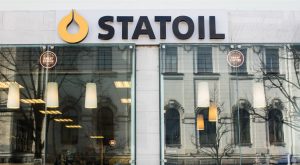This past weekend I celebrated Thanksgiving with a tiny, Covid-acceptable group of friends in the annual ritual Canadians celebrate a month earlier than our American neighbors. As I spent the holiday Monday dwelling on the markets, I reflected on an article I wrote back in December 2018 that recommended seven Canadian stocks to buy despite some cracks in the Canadian economy.
How have the stocks performed in the 22 months since? Some good, some bad and some mediocre.
The Good:
Shopify (NYSE:SHOP) = 804.3%
Lululemon (NASDAQ:LULU) = 212.3%
Ritchie Bros. Auctioneers (NYSE:RBA) = 108.9%
The Bad:
Canada Goose (NYSE:GOOS) = -18.2%
CAE (NYSE:CAE) = -12.8%
The Mediocre:
Brookfield Asset Management (NYSE:BAM) = 38.2%
Canadian Imperial Bank of Commerce (NYSE:CM) = 2.6%
Overall, the selections averaged 162.2%. By comparison, the S&P/TSX Composite Index and the S&P 500 gained 18.5% and 45.3%, respectively.
It’s been a long time since Canadian stocks as a whole have outperformed their U.S. counterparts. In 2020, the S&P/TSX Composite Index is down 3.2% through Oct. 13, compared to a gain of 8.7% for the S&P 500, making it the fourth-best performing stock market in the world.
Despite its negative showing, Canada’s the 16th best performer in 2020 out of 40 countries. It can do better, and I think it will happen in 2021.
That’s why I’m putting together a new list of 10 Canadian stocks to buy for 2021 and beyond. I’m not sure I’ll do as well as my 2018 picks have done, but we’ll give it the old college try.
- Air Canada (OTCMKTS:ACDVF)
- Alimentation Couche-Tard (OTCMKTS:ANCUF)
- BRP (NASDAQ:DOOO)
- Canopy Growth (NYSE:CGC)
- Ceridian HCM (NYSE:CDAY)
- Dollarama (OTCMKTS:DLMAF)
- FirstService (NASDAQ:FSV)
- National Bank of Canada (OTCMKTS:NBGIF)
- Power Corporation (OTCMKTS:PWCDF)
- Thomson Reuters (NYSE:TRI)
To make things interesting, none of the stocks in this go-around will be from the previous bunch. Given some of these Canadian stocks will continue to perform long-term, I’m making my job that much more difficult.
Canadian Stocks to Buy: Air Canada (ACDVF)

Market Cap: $3.56 billion
YTD Return: -67.9%
The first on this list of Canadian stocks to consider is Air Canada. Like airline stocks in the U.S., Air Canada, Canada’s largest carrier, has gotten pummeled by the novel coronavirus. At the end of July, the company announced second-quarter results that saw revenues decline by 89%. Total passengers carried declined by 96%, and it had an operating loss of $1.56 billion Canadian dollars ($1.19 billion U.S. dollars).
To help maintain liquidity, Air Canada recently announced that it sold nine Boeing 737 Max 8 planes for CA$485 million (US$369.29 million). They will lease the planes from now on. At the end of July, Air Canada had liquidity of CA$9.12 billion (US$6.94 billion).
Not all the news is bad surrounding Air Canada and Covid-19. It had an agreement to buy Transat AT (OTCMKTS:TRZBF), a smaller Canadian airline that operates a lot of flights to Europe and the Caribbean, for CA$18 per share. It’s now renegotiated the terms of the deal to pay CA$5 per share, or 70% less than the deal it signed in late 2019.
Equally important for anyone considering an investment in Air Canada is that the Canadian government will never let the airline go under. Never. It’s Canada’s national airline and although the federal government no longer owns it, Ottawa knows how important air travel is to a large country.
Long-term, its current share price will look like a steal.
Alimentation Couche-Tard (ANCUF)

Market Cap: $37.9 billion
YTD Return: 8.7%
Alimentation Couche-Tard is one of the world’s largest operators of gas stations and convenience stores. Its main brand is Circle K, a chain of stores it picked up from ConocoPhillips (NYSE:COP) in late 2003.
The company has gone on to make 59 acquisitions since adding more than 10,200 stores to its global network. Despite an appetite for acquisitions, Couche-Tard’s management won’t pay any price to make a deal work. It refused to meet the steep price 7-Eleven’s Japanese parent was willing to pay for Speedway this past summer ($21 billion), the retail arm of Marathon Petroleum (NYSE:MPC).
“The fragmented U.S. market remains a prime target as are significant opportunities in Western Canada,” the Vancouver Courier reported Chief Executive Officer Brian Hannasch stating in early September.
“Asia-Pacific, including Australia, remains ‘a strong area of focus due to long-term growth potential.’”
That said, its focus in the years ahead is to generate more balanced growth. Historically, it’s generated about 70% from acquisitions and 30% from organic growth. Its goal is to get that to 50% from both.
This is a company that knows how to deliver results. Long-term, you’re going to make money on Alimentation Couche-Tard.
BRP (DOOO)

Market Cap: $5.1 billion
YTD Return: 28%
The pandemic has been good to BRP, the maker of all-terrain vehicles, snowmobiles, and personal watercraft under Can-Am, Ski-Doo, and Sea-Doo. That’s because people have been looking for ways to enjoy time outdoors away from the crowds, and its products do just that.
“There is still a lot of disposable income there,” CEO Jose Boisjoli said in an August interview.
“A lot of people realized in May and June that they had not many options for going on vacation anywhere, and a lot of people turned around and decided to try power sports.”
That said, it hasn’t been smooth sailing in 2020. Production shutdowns have left BRP with very little inventory, and that has provided its competitors a rare chance to capture market share. However, it will open a production facility in Mexico this time next year that will enable it to boost its production capacity for ATVs and SSVs by 50%.
Analysts believe that the company’s permanent exit from the outboard engine market improves its overall profitability. In the second quarter, its profits jumped by 35% to CA$1.14 per share, seven times higher than the consensus estimate.
I liked it in January 2019 when it was down almost 30% in 2018. Now that it has more than doubled, I still like DOOO stock.
Canopy Growth (CGC)

Market Cap: $6.9 billion
YTD Return: -11.3%
Perspective is an amazing thing.
A list of Canadian stocks wouldn’t be complete without a cannabis holding. If I told you that the Canadian cannabis company backstopped by Constellation Brands (NYSE:STZ) was down 11.3% in 2020, you might tell me that it is a dud stock. However, if I told you about an unknown company that was up 69% annually over the past five years, you’d likely want to know who it is I’m talking about.
Canopy Growth.
One thing I’ve learned writing about stocks is that a situation can change relatively quickly — for good and bad — so it pays to remain patient, understanding that things aren’t ever as good as you think, but they’re also never as bad, either.
That’s definitely the case for Canopy Growth and the rest of the publicly traded cannabis stocks. They got a big boost from Kamala Harris on Oct. 8 when the vice presidential candidate said that a Biden administration would decriminalize marijuana during her debate with Mike Pence.
“[W]e will decriminalize marijuana, and we will expunge the records of those who have been convicted of marijuana,” Harris said.
I can remember giving my American aunt a book years ago entitled, Ain’t Nobody’s Business If You Do. The book’s premise was that as long as you weren’t harming others, smoking pot and many other potentially self-destructive acts should be perfectly legal in today’s society.
The fact that states across the nation are legalizing adult use of cannabis suggests that once again — just like the minimum wage — the U.S. federal government is woefully behind the times.
In my most recent article about Canopy Growth, I reminded investors that the company remains a major player in the global cannabis game and shouldn’t be counted out. That’s especially true when you consider all of the good things it will be able to do once the feds act to decriminalize pot.
As Canadian stocks go, I expect CGC a decade from now to be one of the better performers. I really do.
Ceridian HCM (CDAY)

Market Cap: $13.2 billion
YTD Return: 32.6%
I look at Ceridian HCM’s year-to-date return and I’m almost disappointed. That’s because it has gained 309% since going public in April 2018 at $22 a share. Breaking down its performance by year, CDAY gained 54% in 2018, 100% in 2019, and 32.6% in 2020.
The year’s not over, mind you, so the company’s cloud-based human capital management platform Dayforce may deliver additional good news over the final two months of the year to push its share price into triple digits. As I write this, CDAY is a couple of dollars off its 52-week and an all-time high of $91.36.
In May 2018, I included Ceridian on a list of three up-and-coming stocks to buy.
“Dayforce has over 3,000 customers who pay a per-employee, per month (PEPM) subscription with an initial term of 3-5 years. If the customer grows headcount, Dayforce wins,” I wrote on May 7, 2018.
“Dayforce has grown its cloud revenue by more than 60% on a compounded basis over the past five years… I see it as one of the best up-and-coming stocks to own on the NYSE.”
Fast forward to October 2020. Ceridian’s Dayforce has 4,603 customers, 15% higher than a year ago and 53% higher than when I wrote about it in May 2018. Its revenue per customer for the trailing 12 months ended June 30, 2020, was $125,766. In fiscal 2017, it had 12-month revenue of $324 million and 3,001 customers for an average of $107,964 per customer.
This means that over the past 30 months, it has added approximately $593 per customer per month. That might not seem like a lot. However, when you grow the number of customers by 15% annually, the revenue adds up in a hurry.
As long as CEO David Ossip remains in charge, I like its chances in 2021 and beyond.
Dollarama (DLMAF)

Market Cap: $12.3 billion
YTD Return: 15.8%
Out here on the East Coast of Canada, I see lots of people lining up to get into Dollarama, Canada’s largest dollar store, to pick up cheap goods for the home. Due to higher costs during the pandemic, profits haven’t been all that robust.
Furthermore, Halloween and Christmas aren’t looking nearly as attractive as they usually are for the Montreal-based retailer.
“Typically, Halloween is ‘a strong weight’ anchoring third-quarter sales for Dollarama — a go-to source of costumes and candy — while the winter holidays make the fourth quarter its ‘biggest season,’ The Toronto Star’s Christopher Reynolds reported chief financial officer Michael Ross saying in early September.
“‘We believe it will have a negative impact, but to what extent we don’t know,’ he said of the pandemic. ‘And the same for Q4 but for Christmas.’”
Why am I recommending Dollarama stock?
I believe that much of the negativity surrounding retail has already been priced into its share price. Over the next seven years, it plans to add 400 stores in Canada while expanding the footprint of Dollarcity, the company’s Latin American dollar-store investment.
As the world returns to normal, Dollarama will be a license to print money whenever that is. In the meantime, I’d take advantage of any Halloween- and Christmas-related weakness in its share price.
Long-term, you’ll be glad you bought Canadian stocks like Dollarama when others were fearful.
FirstService (FSV)

Market Cap: $5.9 billion
YTD Return: 47.6%
FirstService has to be one of the least known Canadian stocks on the minds of American investors. Yet, its performance is stunningly good, averaging an annualized total return of 33.5% over the past five years, about five times the entire U.S. markets’ performance.
Who is FirstService?
It is two distinct businesses: FirstService Residential, the largest manager of residential communities in the U.S. and Canada, and FirstService Brands, a provider of property services for residential customers. Its franchises include CertaPro Painters, Paul Davis, California Closets, Pillar to Post Home Inspectors, and many more.
FirstService Residential had 2019 revenue of $1.4 billion and a 6% market share. FirstService Brands had $1 billion in 2019 revenue from more than $2.6 billion in system-wide sales. While FirstService is based in Toronto, 90% of its revenue is generated in the U.S.
Over 20 years, FirstService has grown revenue 19% per year, with two-thirds of it from organic growth. As business models go, it’s got one of the best. That’s why I included it in a list of the 10 best franchise stocks to buy in early January.
Covid-19 or not, FirstService is one of the Canadian stocks to own for the long haul.
National Bank of Canada (NTIOF)

Market Cap: $17 billion
YTD Return: -5.7%
You have the Big Five Canadian banks, and then you have the National Bank of Canada. Despite having total assets of CA$322 billion, it’s not big enough to make it into the exclusive club. By comparison, the smallest of the Big Five is the Canadian Imperial Bank of Commerce, which I recommended in 2018. It has CA$769 billion in total assets.
Sometimes, National Bank will be included in a list of Canada’s largest banks. When that happens, the Big Five becomes the Big Six.
In late August, National Bank reported third-quarter results that were better than expected. The bank earned CA$1.66 per share in Q3 2020, 34 cents higher than the consensus estimate. However, they were flat on a year over year basis.
A big reason for the earnings beat was the fact it had provisions for credit losses of CA$143 million, down from CA$504 million in the second quarter.
CEO Louis Vachon stated the bank was in excellent shape when announcing its latest results at the end of August. Compared to the rest of the North American banking sector, National Bank has fared quite well in 2020.
“Since the gradual reopening of the economy, many indicators have improved, but the situation remains uncertain, especially given the potential for a second wave of the COVID-19 pandemic,” Vachon said in its earnings release.
“While it’s still too early to predict how the COVID-19 pandemic will affect the economy in the long term, the bank is in a strong position with a solid balance sheet, defensive positioning, quality credit portfolios, and a prudent approach to provisioning.”
When it comes to Canadian stocks, I like it as a contrarian pick.
Power Corporation (PWCDF)

Market Cap: $13.8 billion
YTD Return: -16.2%
Power Corporation is a Quebec holding company controlled by the Desmarais family, who hold 50.6% of the total votes. The company’s organizational structure was simplified in February to eliminate publicly-traded Power Financial; Power Corporation owned 64% of the subsidiary. It now owns 100%.
The change was part of the holding company’s overhaul that saw brothers Andre and Paul Jr. step down as co-CEOs. Now serving as chairman and deputy chairman, the brothers were replaced by Power Financial CEO Jeffrey Orr.
Power’s stock has disappointed investors for some time despite controlling some of Canada’s most prominent financial services companies, including Great-West Lifeco (OTCMKTS:GWLIF) and IGM Financial (OTCMKTS:IGIFF).
However, it is Power’s controlling stake in Toronto-based robo advisor Wealthsimple that I believe provides hope for long-suffering investors.
On Oct. 14, Wealthsimple announced it had raised CA$114 million in outside venture capital, raising its valuation to CA$1.5 billion, and in the process conveying unicorn status on the fintech. The new venture capital investors include TCV, Greylock and Meritech Capital.
As a result of the new funds, Power’s stake falls to 61.7%.
Wealthsimple currently has CA$8.4 billion in assets under management with operations in Canada, the U.S. and the U.K.
Thomson Reuters (TRI)

Market Cap: $41.1 billion
YTD Return: 17.4%
Thomson Reuters chairman David Thomson is Canada’s wealthiest person with an estimated net worth of $39.5 billion. That’s almost three times the second-wealthiest Canadian–Alibaba (NYSE:BABA) vice chairman and co-founder, Joseph Tsai.
The provider of business information services is controlled through Woodbridge Company, the Thomson family’s holding company, which owns 66% of its shares. The current company is much different from the company he inherited in 2006 when his father Kenneth died.
In 2008, Thomson merged with Reuters Group. In 2018, the company spun-out Refinitiv, its finance and risk business, maintaining a 45% stake, which then turned into a 15% stake in the London Stock Exchange Group (OTCMKTS:LNSTY) after LSE agreed to acquire Refinitiv for $27 billion. The deal is expected to close by the end of the year.
In 2020, the company expects its revenue to increase by 1-2% from $5.91 billion last year. Meanwhile, it expects its free cash flow to be between $1 billion and $1.1 billion, up from $200 million in 2019.
I’m not going to say much about the company except to say that the information it provides its 500,000 customers remains critical to those customers’ success. Information is power, as they say.
I encourage you to educate yourself on its business. Over the past three years, TRI has an annualized total return of 21.2%, 460 basis points higher than the Morningstar Canada GR Index.
On the date of publication, Will Ashworth did not have (either directly or indirectly) any positions in the securities mentioned in this article.
Will Ashworth has written about investments full-time since 2008. Publications where he’s appeared include InvestorPlace, The Motley Fool Canada, Investopedia, Kiplinger, and several others in both the U.S. and Canada. He particularly enjoys creating model portfolios that stand the test of time. He lives in Halifax, Nova Scotia. At the time of this writing Will Ashworth did not hold a position in any of the aforementioned securities.
